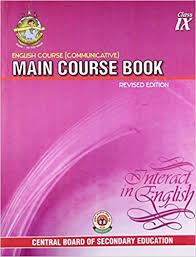Class 9 - English : Main Course Book
Chapter 7A - Grandmaster Koneru Humpy Queen of 64 Squares

Top Block 1
Question 1: Avik, a correspondent for his school magazine, interviews Grandmaster Koneru Humpy. Let us read:
(See Main Course Book, Pages 138-141)
Answer:
Do it Yourself.
Question 2: Now complete the Bio-data on Koneru Humpy:
| KONERU HUMPY | |
|---|---|
| Name : | |
| Father’s Name : | |
| Born On : | |
| Place of Birth : | |
| Trained by : | |
| First achievements : | |
| Recent achievements : | |
Answer:
| KONERU HUMPY | |
|---|---|
| Name : | Koneru Humpy |
| Father’s Name : | Mr. Koneru Ashok |
| Born On : | March 31, 1987 |
| Place of Birth : | Gudivada, Near Vijaywada Andhra Pradesh |
| Trained by : | Her Father |
| First achievements : | World Girls under 10 |
| World Girls under 12 | |
| World Girls under 14 and | |
| World Girls Junior Championship | |
| IM Title in 1999 | |
| GM Title in 2002 | |
| Recent achievements : | Arjuna Award in 2003 |
| Padamshri Award in 20047 and | |
| Raja – Lakshmi Award in 2008 | |
Question 3: Grandmaster Koneru Humpy is visiting your school and you, as the Sports Captain, have to introduce her in the school assembly. With the help of A2, write out the Bio-sketch.
Answer:
Our special guest today needs no introduction. She is a great example how a child prodigy does wonder when she grows up. Koneru Humpy was bom in 1987 near Vijayawada. Her talent was spotted by her father at an early age, who left his job to groom Koneru Humpy. Koneru Humpy paid due tribute to her father’s efforts by winning championships from an early age. She won World Girl Titles for every age group and later on became the World junior champion. At a young age of 12 she became the International master and at the age of 15 she became a Grandmaster. The government of India has acknowledged her achievements by honoring her with many awards. She was conferred Arjuna Award in 2003, Padmashri Award in 2007 and Raja- Lakshmi Award in 2008. Join me in thanking her to grace this occasion.
Question 4: Know all about Chess. Read and enjoy: (See Main Course Book, Pages 142-145)
Answer:
Summary of the extract: The six different chess pieces on the board represent a cross section of medieval life with its many ceremonies, grandeur, and wars.
Chess was played many centuries ago in China, India, and Persia. No one really knows for sure in which country it originated. Then, it spread to Europe via Arab and Persia. Europe Europeans gave chess pieces the names we know today. They probably had trouble pronouncing and spelling the Persian names. They modernized them to reflect the way they lived. Today, the names certainly aren’t modem but a thousand years ago they represented the very way in which both ordinary people and persons of rank lived their lives.
The pawns on the chess board represent serfs, or laborers. There are more of them than any other piece on the board, and often they are sacrificed to save the more valuable pieces. The castle piece on a chess board is the home, or the refuge, just as it was a home in medieval times.
The knight on a chess board represents the professional soldier of medieval times whose job was to protect persons of rank, and there are two of them per side in a game of chess.
There is a bishop in the game of chess, who represents the church.
The queen is the only piece on the board during a chess game that represents a woman, and she is the most powerful piece of the game. The power of this piece represents machinations of many queens of the medieval period.
The king is the tallest piece on the board, and is as well defended on the chessboard as in medieval life. The king is the most important, but not the most powerful piece in chess. If you do not protect your king, you lose the game.
Question 5: On the basis of your reading of the extract on Chess, complete the following table with your partner.
(See Main Course Book, Pages 145-146)
Answer:
| Figures | Name | Order of Importance | Function | Significance |
|---|---|---|---|---|
 | Knight | 4 | Used in start game, sacrificed for better gain | The most popular piece, third last in importance |
 | Queen | 2 | This is the most powerful piece | Represents machinations of queen of medieval times |
 | Castle or Rook | 5 | Protects king and queen during end game | It represents the safet of a home or a castle |
 | Bishop | 3 | Along with knight, the bishop is used for all the combat | Represents church and is the only religious symbol in chess |
 | King | 1 | The most important piece and needs to be saved at all costs | The main aim of the game is to kill opponents’s king and to save own king |
 | Pawn | 6 | They are too many and help in advancement of start game. They are scrificed easily. | Represent abour class of medieval period |
Mddle block 1
Question 6: Below is some information about Jesse Owens, one of the most famous athletes of all times. His friend is planning to write his biography. Using information from the table, complete the biography. (The first gap has been completed for you, as an example.)
James Cleveland Owens (J.C. Owens) became famous as Jesse Owens
| 1913 | Birth, Alabama, USA |
| 1934 | After First World War – goes to school, teachers recognize and develop his athletic talents. |
| 1935 | Six World records |
| 1936 | Birlin Olympics, Four gold medals. |
| 1950 | Sports experts vote hime Greatest Track Athlete of the half century |
| 1960 | Another Athlete breaks Owens last Olympic record |
| 1980 | Dies of Lung Cancer |
Answer:
Jesse Owens was born in Alabama USA, in 1913. He was the youngest of ten children, and the family lived in a cramped shanty house. After the First World War, the family moved to Cleveland, where his school (1) teachers recognized and developed his talents. He quickly became a local hero. Soon afterwards he gained a place not only at the Ohio State University, but also in the US Olympics team.
On 25th May 1935, Jesse Owens performed athletics’ greatest feat when he (2) made six world records at the Ohio state University Athletics Championships. A year later, at the Berlin Olympics, his greatness was confirmed; he (3) won four gold medals for 100 m, 200 m, long jump and sprint relay. Because of his achievements in track and field events, in 1950 he (4) was voted as the Greatest Track Athlete of the Half Century. His last Olympic record (5) could be broken only in 1960. This great athlete died of lung cancer in 1980. (6) Class discussion
- Is a biography written in a particular order of events?
- Answer:
Yes, a biography is usually written in a chronological order. - Which is the most common tense?
- Answer:
The most common tense is the past tense.
Question 7: 20 years from now, one of your class-mates becomes a famous sport-star. You have been asked to write his/her biography. Collect the necessary biographical details. Use your imagination to create his / her achievements in the sport concerned, and write the biography. Remember to write it in chronological order of events, and use the simple past tense as far as possible.
Answer:
Urchin Batulkar was born at Jhumritilaiya in Jharkhand on May 5, 2010. 1 am fortunate that he is my childhood friend. Both of us went to the nearby government school. It was our sports teacher who first spotted the child prodigy in Urchin Batulkar. He groomed Urchin since the age of 7. After getting properly trained by our sports teacher he represented our school in a competition at Ranchi, where he was spotted by Dhoni, the then captain of the Indian cricket team. Dhoni promised to take him under cricket academy. So, by the time Urchin became 12 years old he was already coached by many pros of the game. He became man of the series in World Under 15 Tournament by scoring the most number of runs.
Then at a ripe age of 15 the time for his tryst with destiny came. He was selected for the India-Australia Test series which was to be played in Australia. Once in Australia Urchin discharged all the pace batteries of the Australian cricket team. He was rewarded with the Man of the Series award once again. At the zenith of his career he has already surpassed insurmountable records set by masters of tester years. The only award that is eluding him is the highest award of the land, ‘The Bharat Ratna’.



